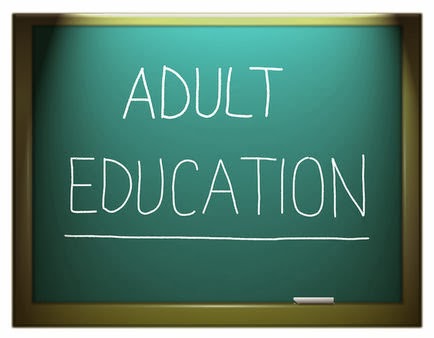Teaching a child is different from teaching an adult. During the 60’s, Malcolm S. Knowles broke a new ground in the education sector by bringing out the idea that there is a difference between how a child and an adult learns. In the year 1968, he drafted ideas for adult educators to teach and help adult learners.
Generally, learners above the age of 25 are considered as adult learners. For the past 30 years, there has been a huge increase in their population in the US. The number has been increasing ever since.
There are various reasons for aged people to come back to school. The main reason is the changing job market in the US that expects employees to have higher levels of educational qualifications. The boom of online learning is also another important reason for the increase in the enrollment of adult learners who have to juggle between their work, family, education, and other life responsibilities.
Based on the competency level in the job market for various industries, they usually prefer career-related courses such as Education, Health, Business, etc. Thus, adult learning is no more just about the part-time or evening vocational courses. There is an increasing demand for graduate and under-graduate courses.
According to the market research done by the EducationDynamics, at present, there are about 7 million adult learners who have enrolled in various courses. The number is expected to grow to approximately 8 million by 2016.
The future too will not see any dearth as the unstable US economy would demand people from all age groups to continue their learning process and increase their qualification to withstand in a job. As said earlier, there is a huge difference between teaching a child and teaching an adult. Following are the facts derived from Malcom S. Knowles’ assumptions and process elements of the Andragogical model of learning.
The goal of adult education is to reach adult learners using specifically designed programs. It is imperative that we prepare the next generation of adult educators to meet the growing demands of highly-increasing adult learners.
Generally, learners above the age of 25 are considered as adult learners. For the past 30 years, there has been a huge increase in their population in the US. The number has been increasing ever since.
There are various reasons for aged people to come back to school. The main reason is the changing job market in the US that expects employees to have higher levels of educational qualifications. The boom of online learning is also another important reason for the increase in the enrollment of adult learners who have to juggle between their work, family, education, and other life responsibilities.
Based on the competency level in the job market for various industries, they usually prefer career-related courses such as Education, Health, Business, etc. Thus, adult learning is no more just about the part-time or evening vocational courses. There is an increasing demand for graduate and under-graduate courses.
According to the market research done by the EducationDynamics, at present, there are about 7 million adult learners who have enrolled in various courses. The number is expected to grow to approximately 8 million by 2016.
The future too will not see any dearth as the unstable US economy would demand people from all age groups to continue their learning process and increase their qualification to withstand in a job. As said earlier, there is a huge difference between teaching a child and teaching an adult. Following are the facts derived from Malcom S. Knowles’ assumptions and process elements of the Andragogical model of learning.
Adult learners:
- Learn when the learning material makes sense (the learning material has to be interesting enough for them to continue reading)
- Are independent, but dependent on a teacher to learn a new subject or concepts
- Learn because of their curiosity
- Learn by understanding the subject
- Like to learn in a relaxed environment
- Do self-planning and self-diagnosis
- Set objectives for themselves
- Learn by inquiry and experience
- Evaluate with peers
- M.S. in Higher Education (Adult Education) at Capella University
- M.Ed. in Adult Learning and Workforce Education at Northcentral University
- M. Ed. in Adult Learning at City University of Seattle
The goal of adult education is to reach adult learners using specifically designed programs. It is imperative that we prepare the next generation of adult educators to meet the growing demands of highly-increasing adult learners.
This content is brought you by























